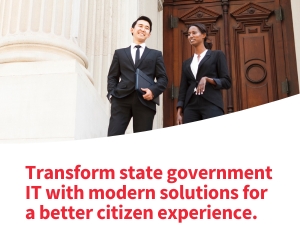1. Software as a Service Can Scale Applications for Workers
Since Software as a Service applications are cloud-based, employees can access software and relevant data from anywhere with an internet connection. This is important for a hybrid workforce where employees are working from different locations.
Another benefit of SaaS is scalability. Admins can easily scale usage plans up or down and pay for what is used instead of overbuying licenses. This is a great option for agencies with a hybrid work model, where the number of remote and in-office employees may fluctuate.
2. Edge Computing May Resolve Bandwidth or Latency Challenges
As organizations continue to acquire and generate an ever-growing amount of data while also expanding the number of connected devices, bandwidth and latency can become an issue.
Edge computing can help optimize day-to-day operations by processing and analyzing large volumes of data at or as close as possible to the data source, instead of sending it to a centralized cloud or a faraway data center.
Edge computing can be beneficial to a hybrid work model because it ensures that real-time applications such as videoconferencing and collaborative tools run smoothly for in-office and remote workers, especially those with limited internet bandwidth.
WATCH: State CIOs discuss what generative AI means for government.
3. Artificial Intelligence Can Take Collaboration to the Next Level
Hybrid work has also felt the influence of artificial intelligence. in fact, most collaboration tools have incorporated AI to enhance the employee experience. For example, when built into web conferencing tools, AI can improve video quality, provide meeting summaries and translations, summarize key talking points and action items, and enhance audio. Many AI-driven meeting enhancement features are also being built into smart office devices, such as video cameras and speakers, to deliver a crystal-clear hybrid meeting experience.
AI assistants are also being used throughout office applications to provide employees with recommendations that optimize work and provide better insights.











